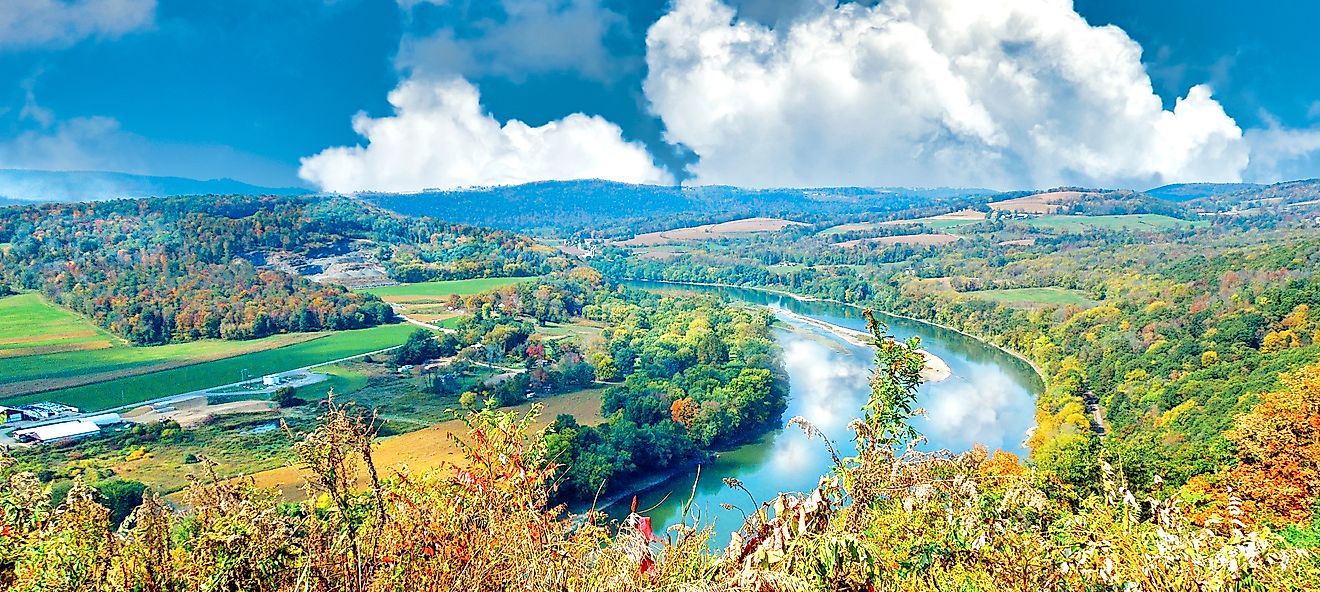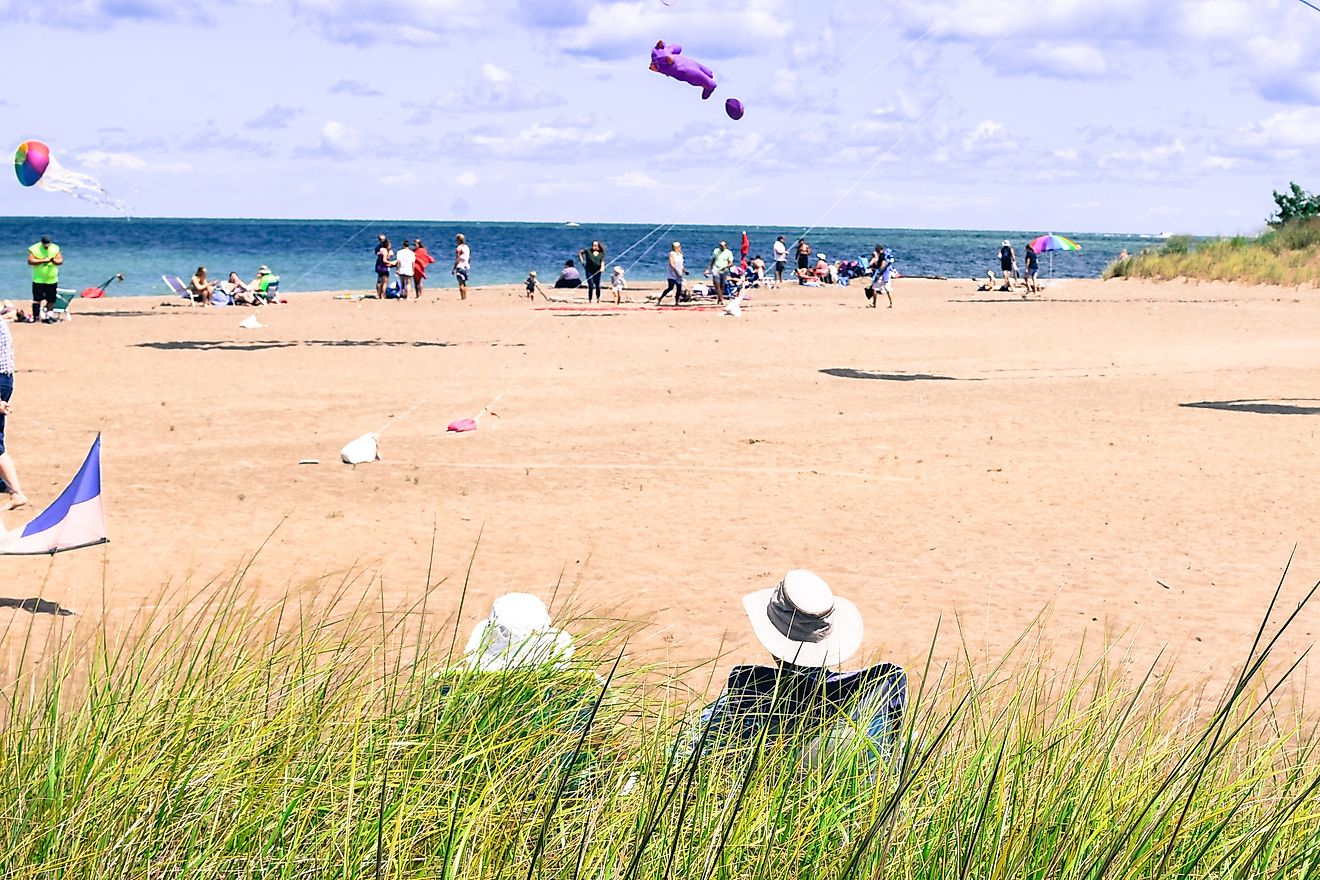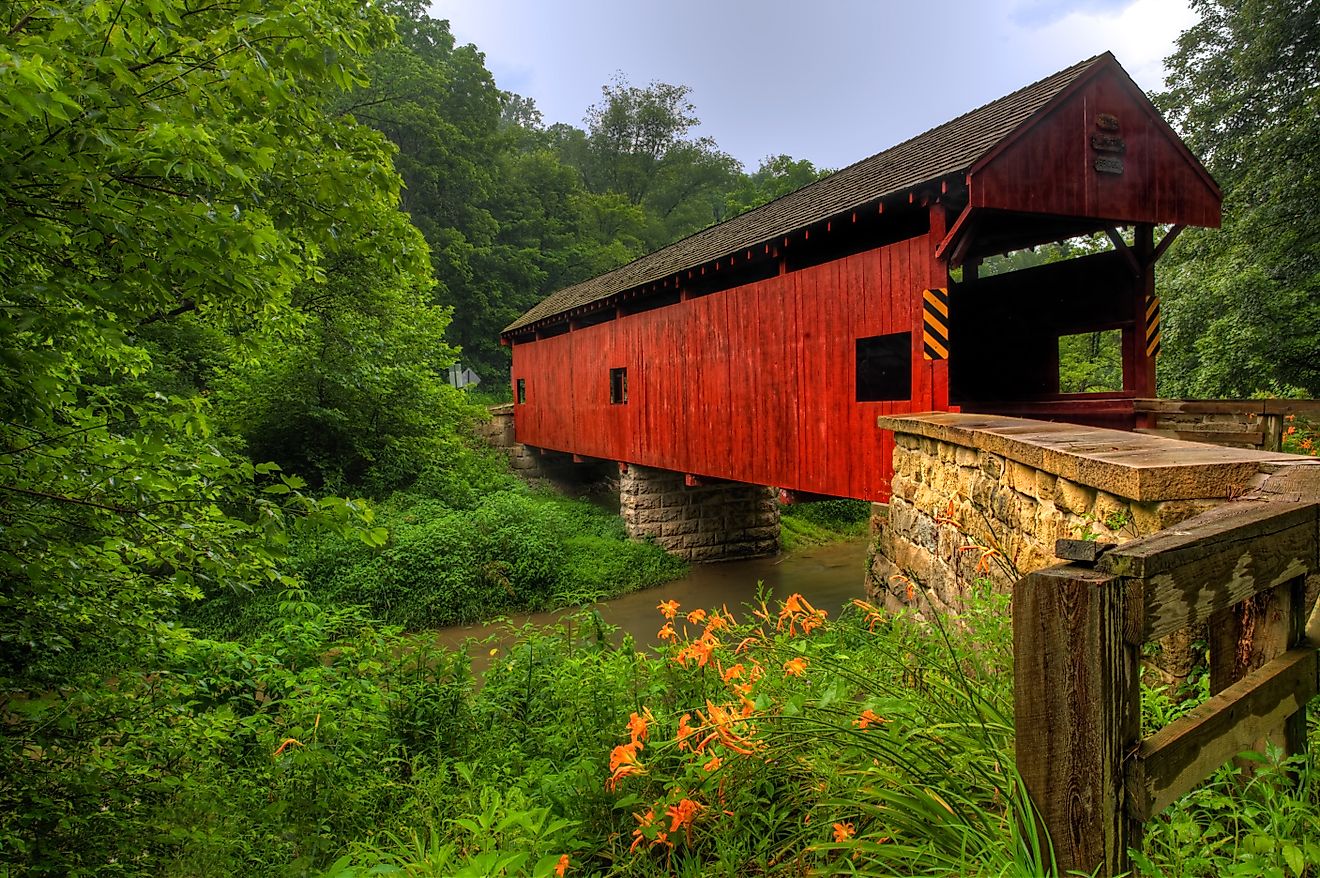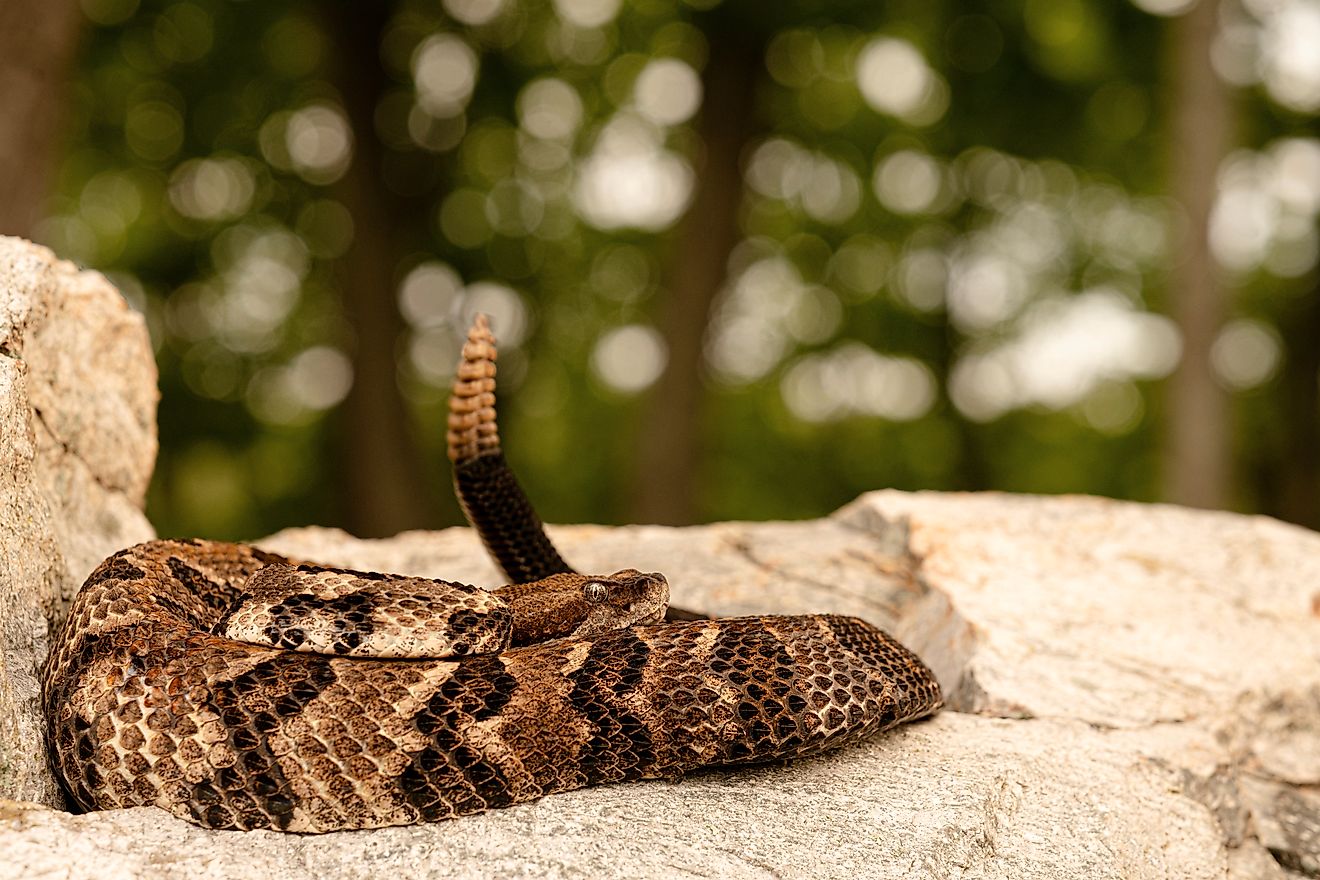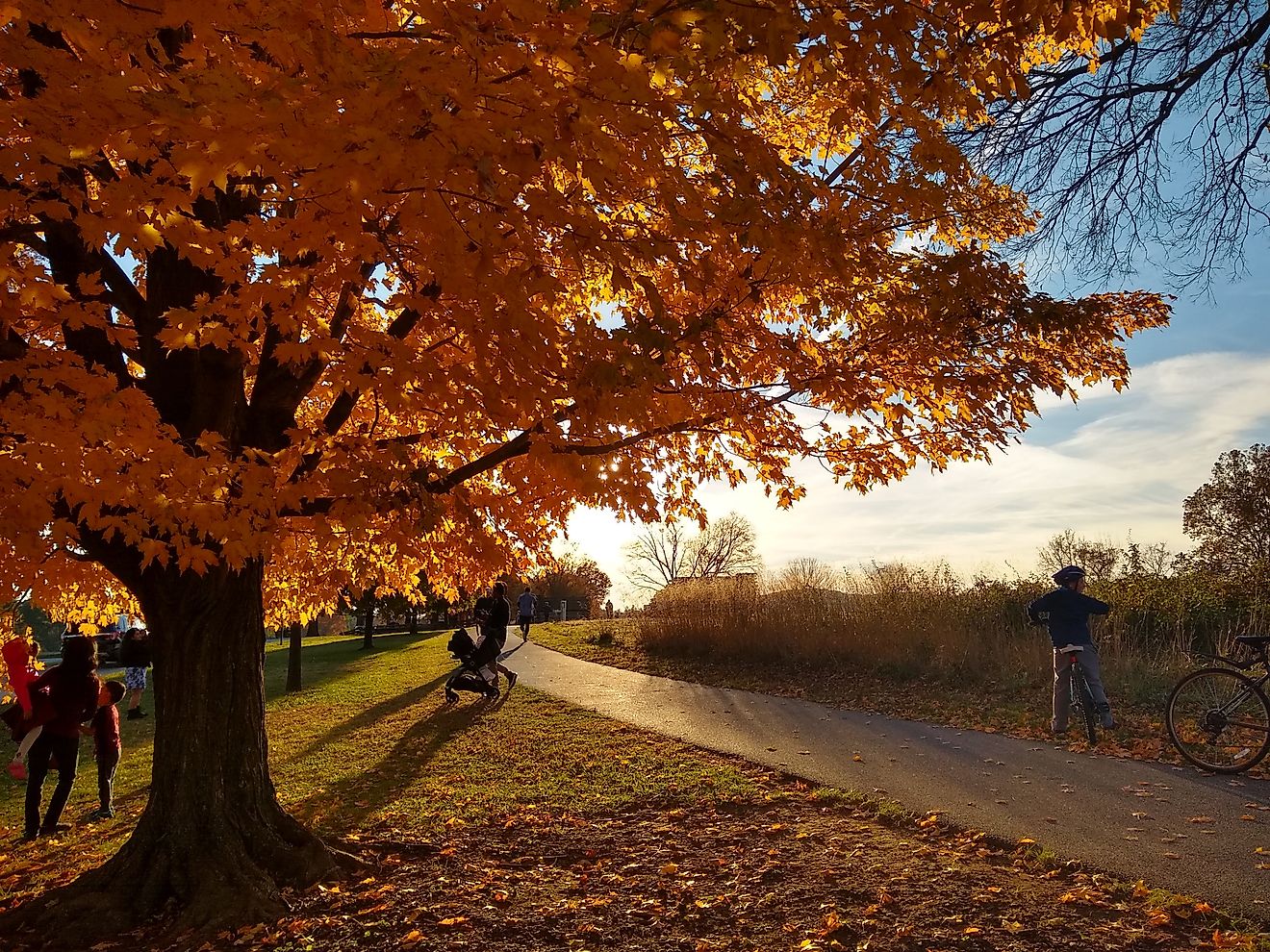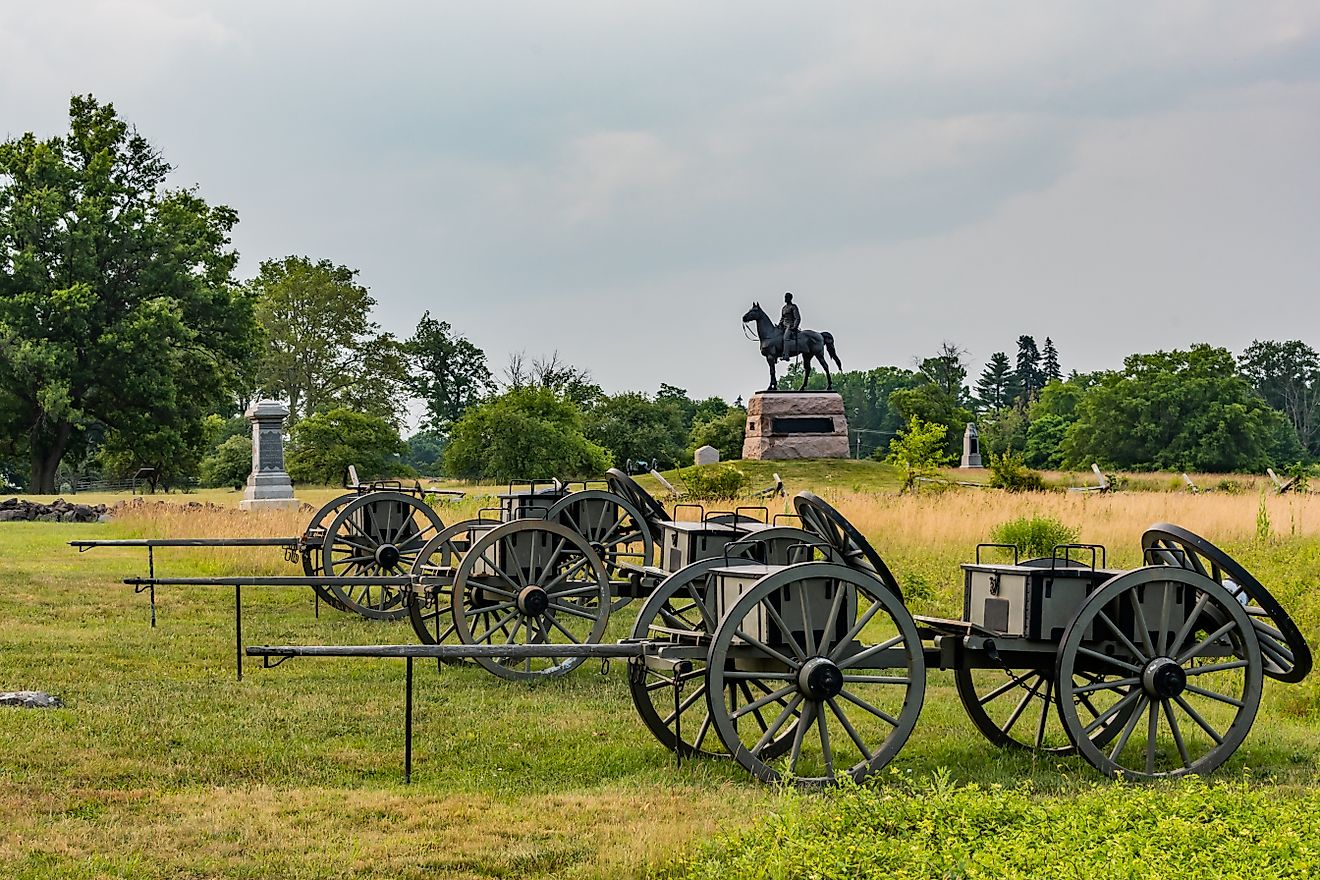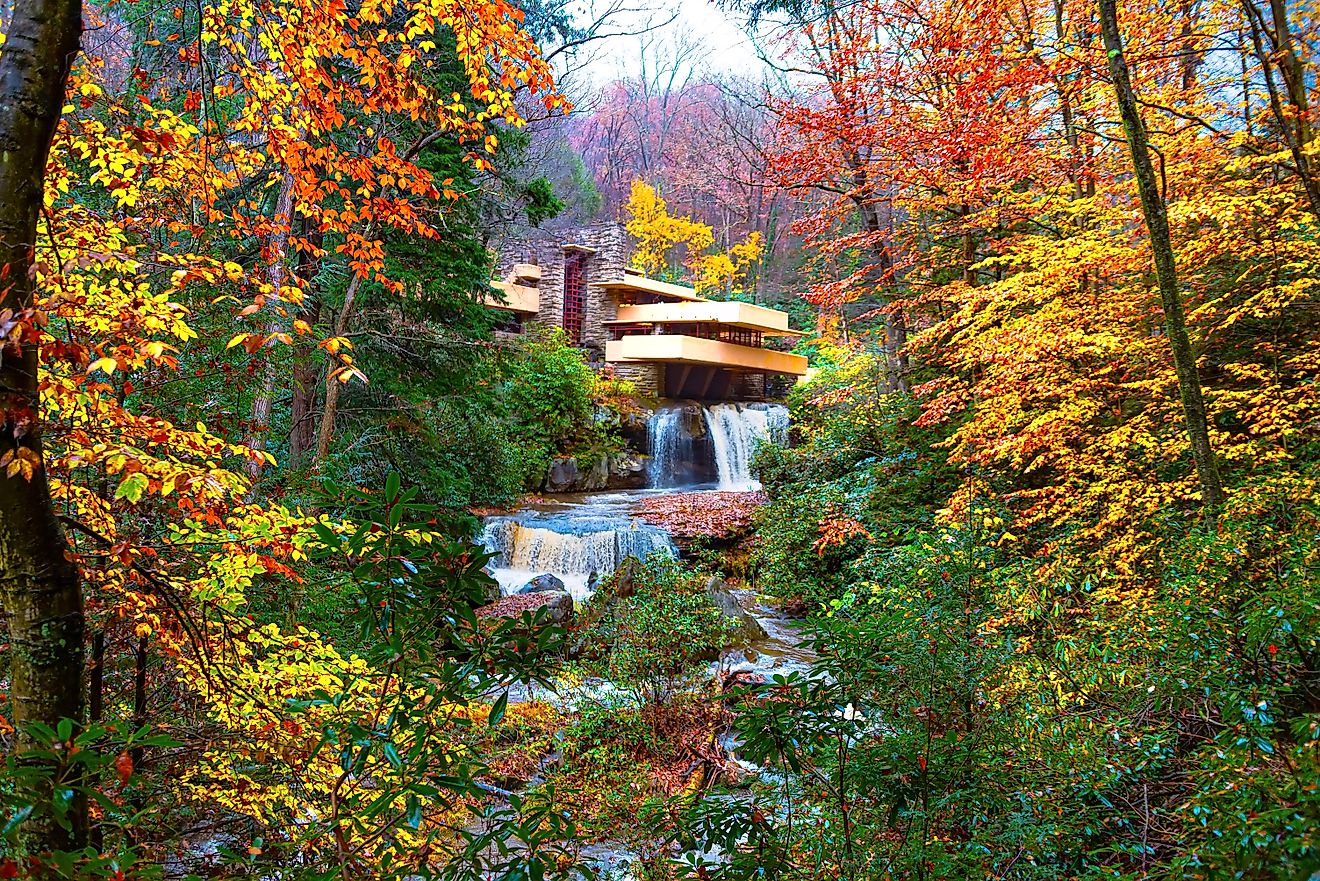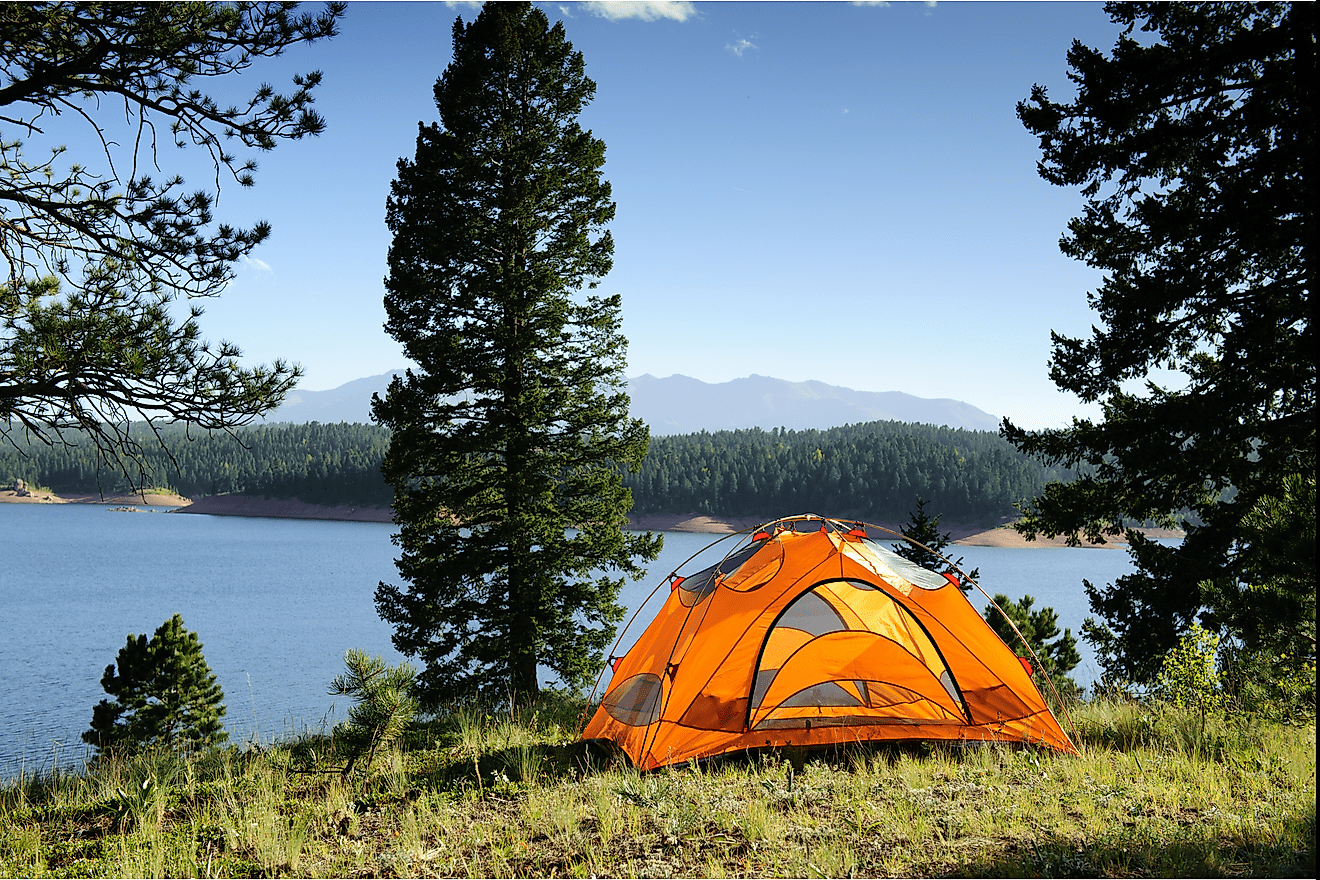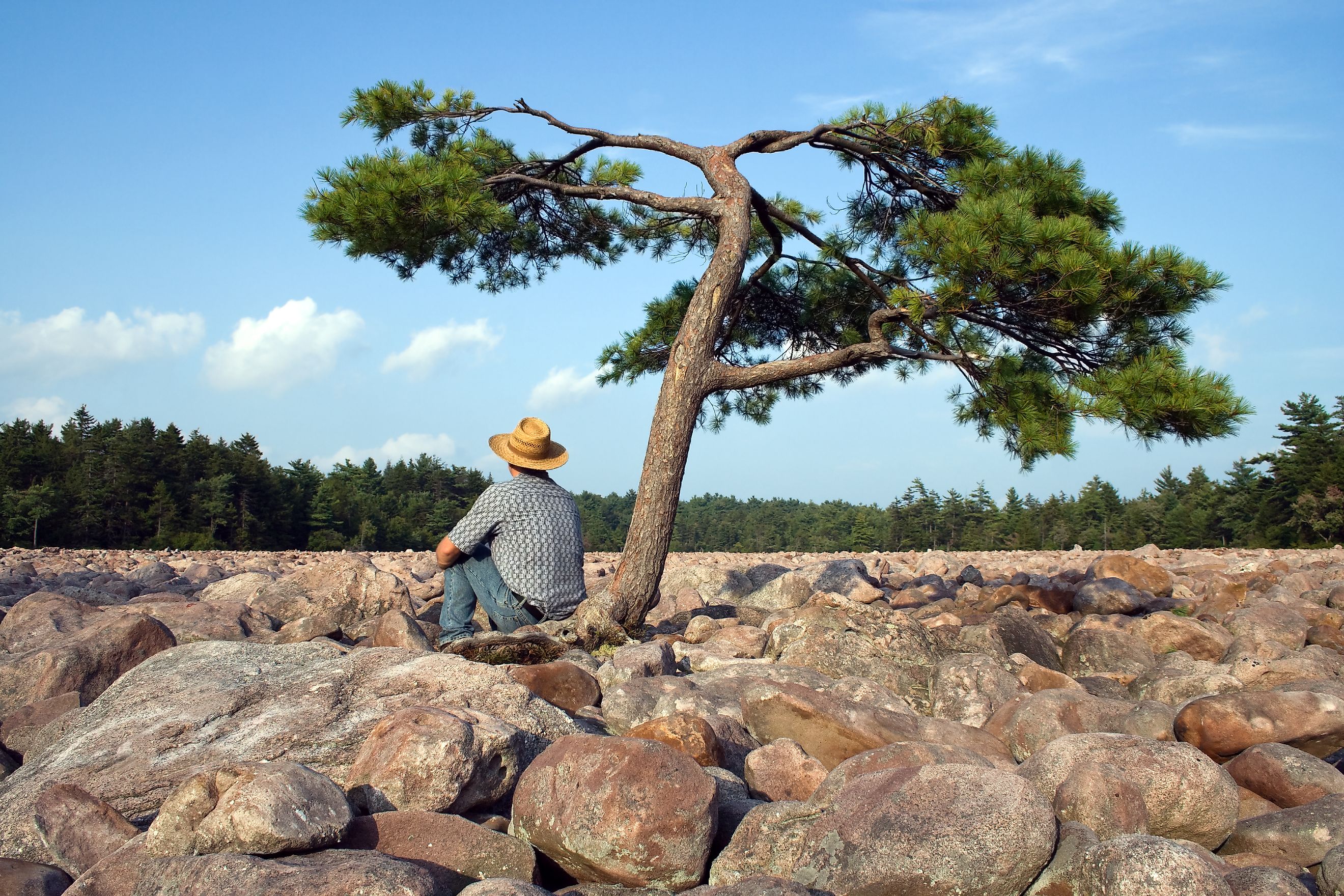
7 Oldest Natural Landmarks in Pennsylvania
Before Pennsylvania became a cornerstone of American independence, it was shaped by forces far older than the Declaration of Independence or even the first human footprints in North America. The state’s deep geologic record reveals a timeline that stretches back more than 400 million years, even before the rise of the Appalachian Mountains.
As continents collided and glaciers advanced, Pennsylvania’s landscape was sculpted into what we see today: vast underground cave systems, prehistoric forests, glacial lakes, and Ice Age rock fields. These formations are not only scenic, but scientifically significant. Each one preserves a moment in Earth's story, from fossil-laced limestone to shifting sand spits still evolving along Lake Erie’s shoreline.
These sites offer a rare opportunity to trace Pennsylvania’s natural history in physical form.
Indian Echo Caverns
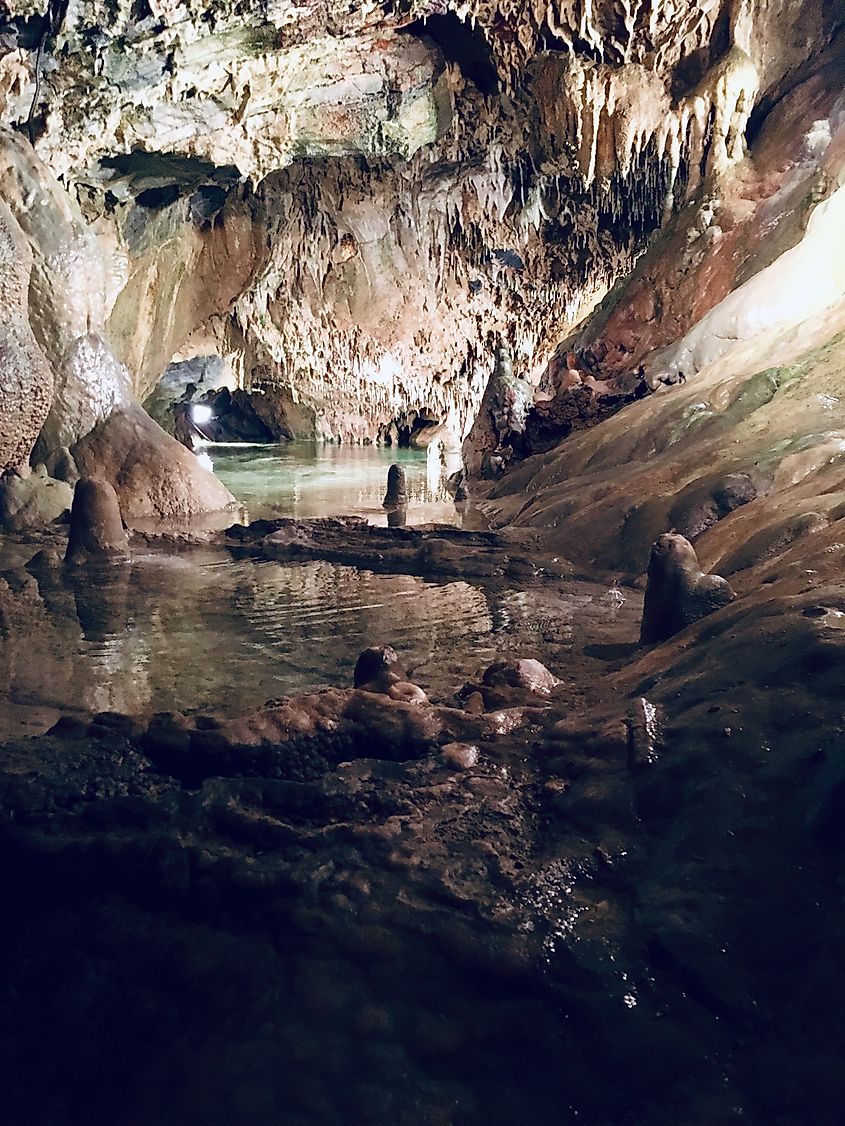
Age: Over 440 million years
Location: Derry Township, Dauphin County
Indian Echo Caverns are one of Pennsylvania’s most accessible and historically significant caves. The caverns were carved into limestone formed more than 440 million years ago during the Ordovician Period, when the entire region was submerged beneath a shallow, warm sea near the equator.
The cave system itself was slowly formed over time as rainwater, slightly acidic from carbon dioxide in the air, seeped into cracks in the limestone bedrock. This water dissolved the rock layer by layer, creating winding passageways and large underground chambers.
Visitors today can explore the subterranean world filled with stalactites, stalagmites, and ancient flowstone formations. While the decorative cave features are younger, the stone housing them predates even the earliest land-dwelling organisms.
Laurel Caverns
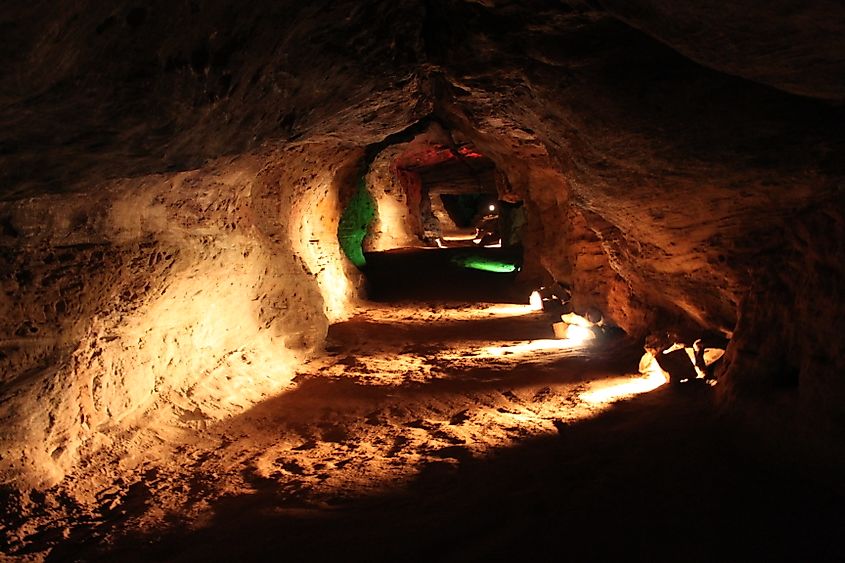
Laurel Caverns cave path. Editorial credit: David Fulmer from Pittsburgh via Wikimedia Commons
Age: Limestone bedrock over 350 million years old
Location: Fayette County
Laurel Caverns is the largest cave system in Pennsylvania, spanning more than three miles of passageways beneath Chestnut Ridge. It lies within Loyalhanna Limestone, a rock layer formed during the Mississippian Period over 350 million years ago.
This limestone began as marine sediment at the bottom of an ancient ocean. Over time, tectonic forces compressed it into rock. Groundwater slowly eroded tunnels through the bedrock, forming the caverns as they exist today.
Guided tours lead visitors through dramatic chambers and narrow corridors. For those interested in geology, Laurel Caverns offers a striking look at the long-term processes that shape underground environments. Spelunkers can even access undeveloped sections of the cave, gaining firsthand insight into the slow evolution of Pennsylvania’s underground world.
Cook Forest State Park
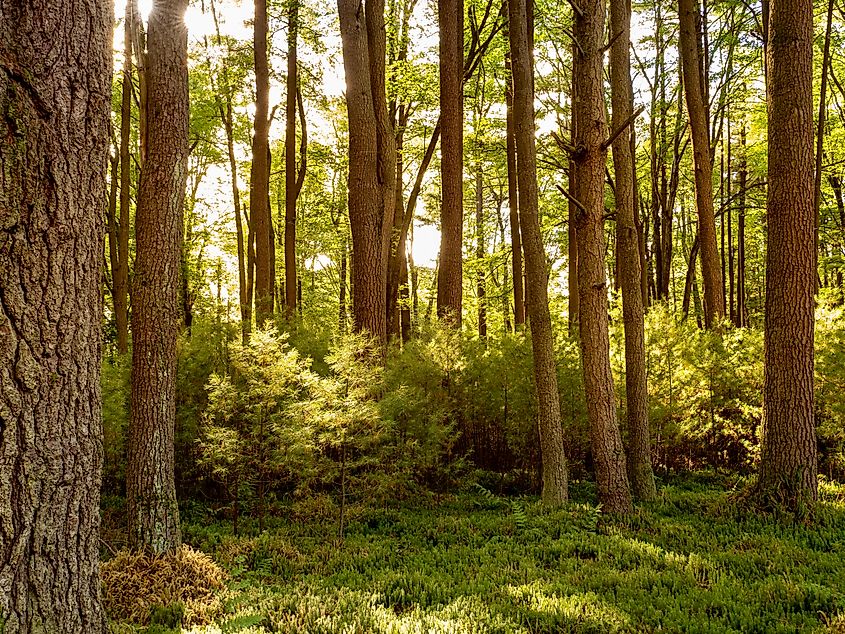
Age: Bedrock over 300 million years old; trees up to 350 years old
Location: Clarion County
Cook Forest State Park is often called the "Land of the Giants" for its towering stands of old-growth white pines and hemlocks. While the forest itself is relatively young compared to geologic time, the Clarion Formation beneath it formed more than 300 million years ago during the Pennsylvanian Period.
These sedimentary rocks were laid down in a deltaic environment and later uplifted, creating a stable plateau for tree growth. The forest’s famed Forest Cathedral (recognized as a National Natural Landmark) includes trees that are among the tallest in the northeastern United States. Some exceed 150 feet in height and are more than three centuries old.
The combination of ancient bedrock and one of the few remaining virgin forests in the state makes Cook Forest a rare and irreplaceable natural treasure.
Pine Creek Gorge (Pennsylvania Grand Canyon)
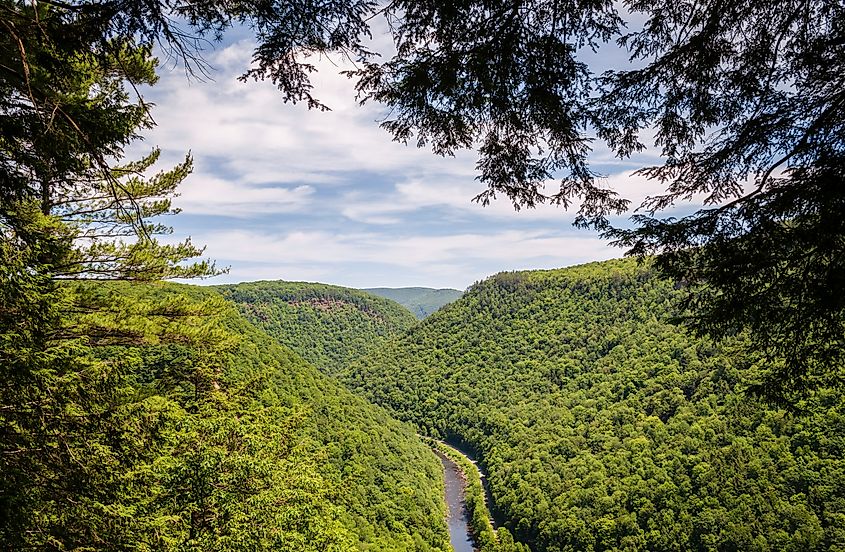
Age: Gorge formed around 20,000 years ago; rock layers over 300 million years old
Location: Tioga and Lycoming Counties
Pine Creek Gorge is one of Pennsylvania’s most dramatic natural formations. Often referred to as the Grand Canyon of Pennsylvania, the gorge was shaped by glacial meltwater at the end of the last Ice Age, roughly 20,000 years ago.
Though the gorge itself is relatively young, the rock it cuts through tells a much older story. These rock layers of sandstone, shale, and conglomerates were deposited over 300 million years ago during the late Carboniferous Period when dense forests covered the region.
Stretching nearly 50 miles in length and plunging to depths of 1,500 feet, the gorge offers a vertical look at Earth's distant past. Visitors can hike the trails of Leonard Harrison and Colton Point State Parks, where layers of ancient sediment reveal millions of years of deposition and uplift.
Hickory Run Boulder Field
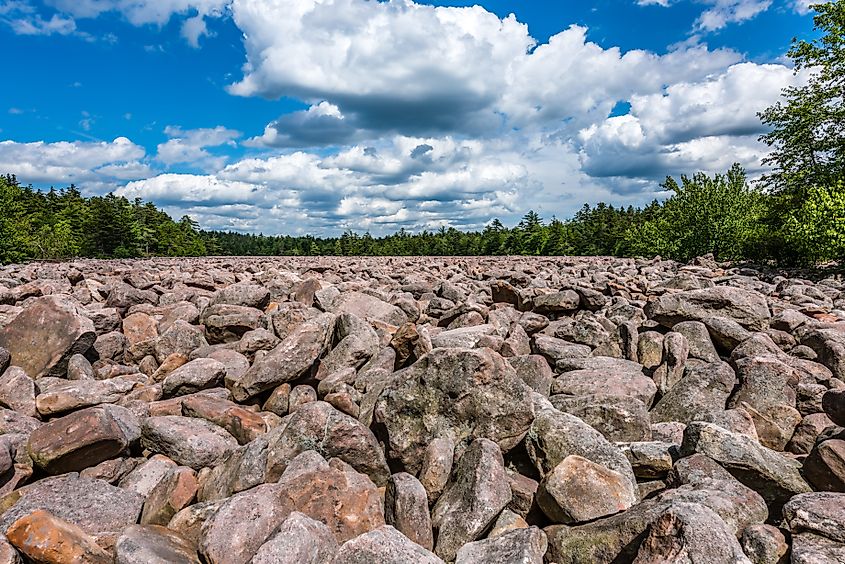
Age: Formed between 15,000 and 20,000 years ago
Location: Carbon County
Hickory Run Boulder Field is a National Natural Landmark and one of the most visually unique landscapes in Pennsylvania. This vast expanse of gray boulders, some as large as SUVs, stretches across 16 acres in the middle of a forested region.
The field was formed near the end of the last Ice Age when glaciers covered much of northeastern Pennsylvania. As the ice sheets retreated, freeze-thaw cycles fractured the sandstone bedrock. These broken rocks tumbled downslope over time and accumulated into the field that exists today.
What makes Hickory Run so remarkable is its preservation. Unlike similar periglacial features that have eroded or been overgrown, this field remains almost untouched by vegetation. The boulders have sat unmoved for thousands of years, exposed to the elements and offering a raw glimpse into Pennsylvania’s glacial past.
Lake Lacawac
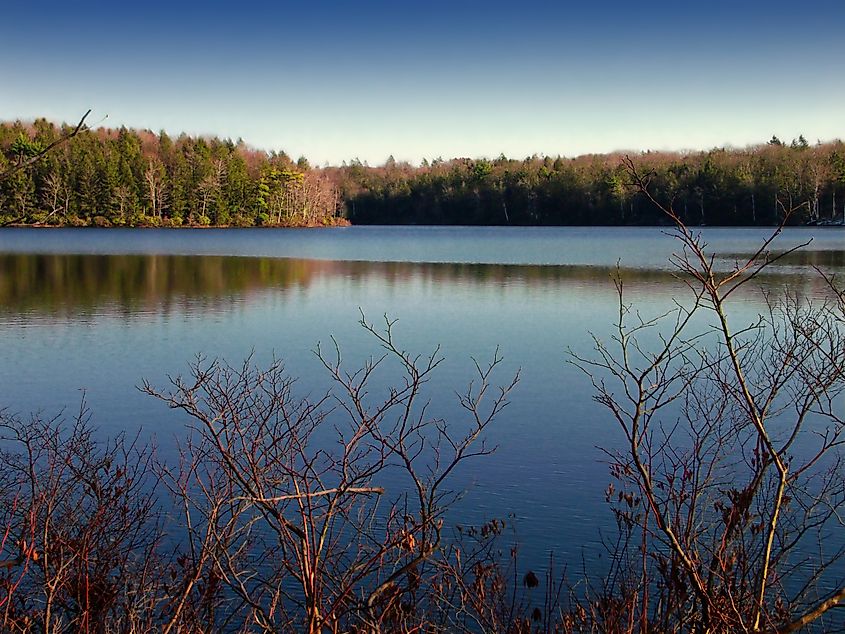
Lake Lacawac, a 52-acre glacial lake near the Pike County–Wayne County line. Editorial credit: Nicholas A. Tonelli from Pennsylvania via Wikimedia Commons.
Age: Formed about 13,000 years ago
Location: Wayne County
Lake Lacawac is one of the best-preserved glacial lakes in the northeastern United States. Created around 13,000 years ago at the end of the Wisconsin Glaciation, the lake sits in a basin left behind by melting ice.
It is classified as a “meromictic” lake, meaning its deep and shallow waters do not mix. This rare condition allows the bottom layers to remain undisturbed for thousands of years, preserving a natural archive of pollen, sediment, and microscopic life. Scientists study these layers to reconstruct past climates and ecosystems.
Surrounded by the Lacawac Sanctuary and Biological Field Station, Lake Lacawac is protected from development. Its ancient stillness and ecological integrity make it both a peaceful retreat and an invaluable research site.
Presque Isle State Park
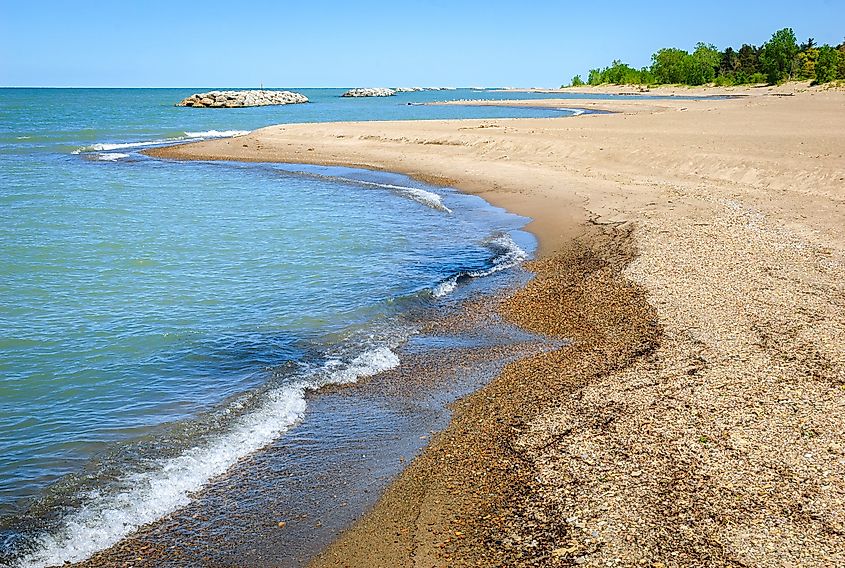
Age: Formed within the last 11,000 years
Location: Erie County
Presque Isle is a sandy, crescent-shaped peninsula that juts into Lake Erie and is home to Pennsylvania’s only surf beach. Although it is the youngest natural landmark on this list, its significance and beauty are undeniable.
Formed after the last Ice Age, Presque Isle emerged as sediment carried by lake currents began to deposit along the shoreline. The peninsula has been continuously reshaped by waves and storms ever since.
Presque Isle is constantly changing. Its location and form shift slightly year by year due to natural sediment drift. The park is a dynamic coastal ecosystem, home to migrating birds, rare plant species, and freshwater lagoons. Despite its youth, it showcases how geologic and environmental forces remain active and ongoing.
A Journey Through Deep Time and Shifting Earth
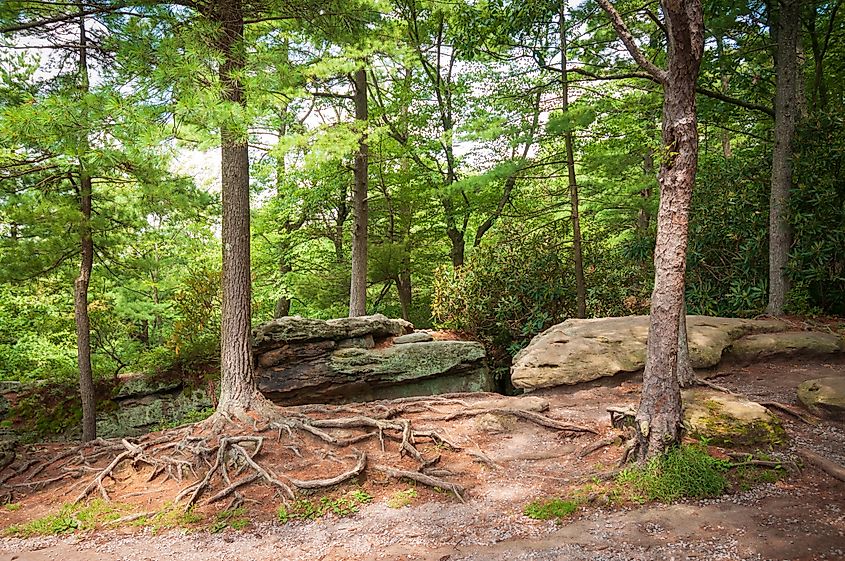
Pennsylvania’s oldest natural landmarks offer more than scenic views. They tell the long and layered history of the Earth itself. From limestone caves formed during prehistoric times to glacial lakes and boulder fields left by retreating ice sheets, each location on this list is a chapter in a much older story.
Whether standing on a ridge carved over millions of years or gazing into the still waters of an Ice Age lake, visitors are reminded that the land beneath us is never still. It is always forming, folding, cracking, and flowing.
Oldest Natural Landmarks in Pennsylvania
| Landmark | Age | Location | Key Features and Notes |
|---|---|---|---|
| Indian Echo Caverns | Over 440 million years | Dauphin County | Limestone cave formed from Ordovician sea sediments |
| Laurel Caverns | Over 350 million years | Fayette County | Largest cave in PA, Mississippian limestone |
| Cook Forest State Park | Bedrock 300+ million years | Clarion County | Ancient forest over Paleozoic rock |
| Pine Creek Gorge | Gorge: 20,000 years; rock older | Tioga and Lycoming Counties | Glacial gorge through 300 million-year-old rock |
| Hickory Run Boulder Field | 15,000 to 20,000 years old | Carbon County | Periglacial boulder field from Ice Age conditions |
| Lake Lacawac | Around 13,000 years old | Wayne County | Glacial lake with preserved stratified sediments |
| Presque Isle State Park | Less than 11,000 years old | Erie County | Evolving sand peninsula in Lake Erie |
Frequently Asked Questions
Which is the oldest natural landmark in Pennsylvania?
Indian Echo Caverns features limestone that formed more than 440 million years ago, making it the oldest geological formation on this list.
Are these sites open to visitors?
Yes. All seven sites are accessible to the public, with most offering hiking, guided tours, or designated nature preserves.
Are any of these landmarks still changing today?
Presque Isle is constantly shifting due to wave action and sediment transport. Lake Lacawac and Hickory Run Boulder Field also remain in a relatively unchanged but active environmental state.
Why is Pennsylvania home to so many ancient geological features?
Pennsylvania sits at the center of the Appalachian Mountain system, which has undergone repeated periods of tectonic uplift, glaciation, and erosion. Its geologic layers offer a clear record of Earth’s history over hundreds of millions of years.
